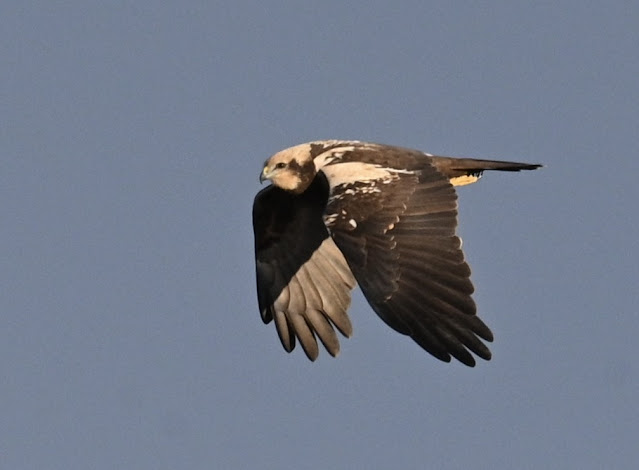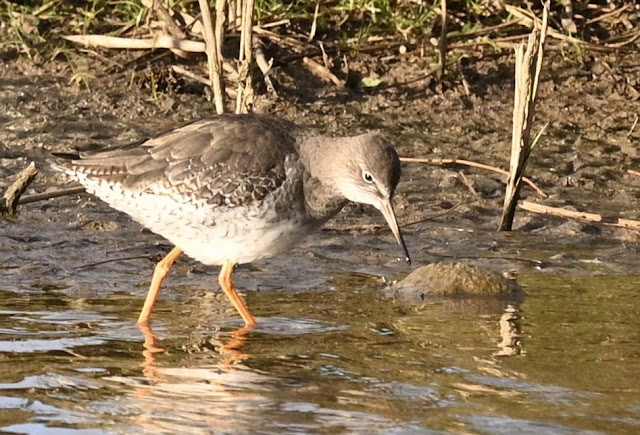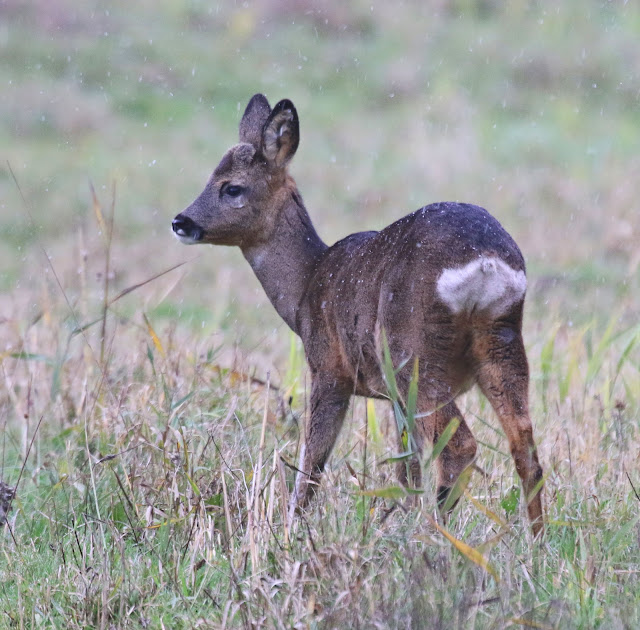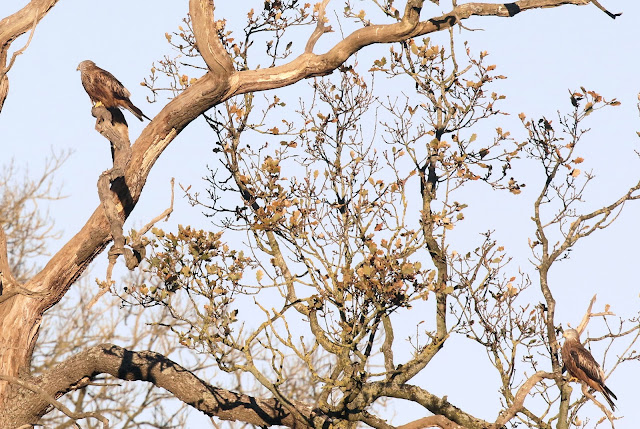On Monday I checked out a possible field for winter finch flocks, which was still in flower. On the way back I drove through Kiplingcotes, and was surprised to see a brown shape on the right hand side of the road. It stalked over to the left allowing me to identify it. I attempted to take some photos through the windscreen, but these weren’t very clear. I parked the car and slowly opened my car door, and it allowed me to take its photo, while it looked back at me over its shoulder. Always a nice bird to see at close quarters.
Woodcock
On Tuesday there had been a light dusting of snow over night, but by setting off time this had all melted. Luckily, the road to Tophill wasn't icy. We couldn’t see anything special on D reservoir, but had a Song Thrush just outside the visitor centre.
Song Thrush
As we walked up to North Lagoon hide a Kingfisher flew out and headed towards the River Hull. There was a flotilla of Pochard on O Reservoir, plus plenty of Coots and a couple of Great Crested Grebes.
Pochard
At South Marsh East there were dozens of Lapwing & Teal, which were flushed at times by Marsh Harriers. However, the star birds here were 3 Whooper Swans. We watched them for 15 minutes before they flew off heading south.
Whooper Swans
Ditto
We went on to Watton Borrow Pits where there were Fieldfares and Redwing in South Scrub. The star bird there was a Great Egret, which was chased off by a Heron. Margaret also spotted a static Kingfisher for everyone to observe. We returned via the back-to-back hides to have a look at the Lapwing from a different angle. Suddenly 4 Bearded Tits flew past as, and a few minutes later they savagely attacked the reedmace for the seeds concealed within.
Female Bearded Tit
Male Bearded Tit
On Wednesday we arrived on a bitterly windy and cold day at Ness End. This was the coldest experience I’ve had in what seems like 5 years at least. There was only one other person in Main Hide waiting for a Bittern. We waited a short time for views of a Bittern ourselves, but apart from some close-flying Marsh Harrier there was virtually nothing else to be seen.
Marsh Harrier
Marsh Harrier (c) 2024 Symon Fraser
Ditto
Ditto
We tried out Target Lake, which held Teal, Shoveler, Tufted Duck, 2 Little Grebes and a single female Goldeneye. Because of the strong winds half a dozen Redshank were sheltering in the lea of the island.
Redshank (c) 2024 Symon Fraser
As usual along the riverbank there were a few more Redshank, but it was high tide and the winds whipped up the river, so only a few brave Redshank remained. Redshank and Wigeon.
The Hawthorns had been stripped of berries, but there were still a few Redwings around. The light wasn’t tricky from Reedy Hide for once, but it was too windy for Bearded Tits, but the Marsh Harriers and a single Great Egret were the highlights.
Record Shot of Distant Marsh Harrier
We searched everywhere for the Slavonian Grebe and the Hotel Lake was our final chance, but we could only find Little Grebes and a single Great Crested Grebe.
Robin
On Thursday we revisited the wolds. There had been quite a heavy frost. It seemed rather quiet at first, but as we walked to our first vantage point we flushed a Woodcock, breaking one attendees duck. Unfortunately, its bill was not visible as it silently headed directly away from us.
Red Kite
There was very little to see in the woodland, but from the estate gate we could see a perched Red Kite and too many Woodpigeons festooning the trees in the distance. Climbing the hill was quieter than last week, but we could discern another perched Red Kite above some roadkill. As we neared this bird, a Jay flew into a tree and then into the trees to the left, and so was lost to view. We then had remarkably close views of a pair of Buzzards flying past us.
Buzzard
We hadn’t gone much further before Liz spotted some finches ahead of us. A few minutes later we could hear the cheerful songs of Linnets, and sure enough a twist of at least 50 Linnets were seen flying between the beech trees and the crop of wildflowers. In the afternoon a little further on there were several Yellowhammers & Tree Sparrows, plus Chaffinches on a hedge.
We could see all the Fallow Deer on the hillside, but didn’t obtain clear views of any nearer individuals. The best birds around here were a Goldcrest and a small flock of Long-tailed Tits.
The best bird on the walk back was a male Kestrel, which was plucking at something on the top of a telegraph post. This seemed to be missing after lunch, but a relatively confiding Redwing almost made up for it.
When we returned to the village both groups saw a Great Spotted Woodpecker, but the Marsh Tit only put in appearance at 2.45.
Great Spotted Woodpecker
Ditto
Marsh Tit
ditto
Friday was a repeat of Thursday with better views of Red Kites, but with no Woodcock, and the Linnets and Yellowhammers were much harder to find before lunch. However, they were much easier in the afternoon. The Redwings were also much thinner on the ground & we couldn’t locate any Fieldfare at all. We had a Grey Wagtail here last Wednesday, but it’s been missing this week. A Pied Wagtail was scant compensation. The Great Spotted Woodpecker and Marsh Tit, which cheered up the end of each session yesterday were also missing. On the plus side we had a male Bullfinch in the miniature woodland in the afternoon. What was unphotographable was an arrow which shot between myself and John’s shoulder - a Kingfisher. The first for nearly a decade there, but also the closest we’ve ever been to one!
Pied Wagtail
Some Wednesday class members had a very female-orientated weekend trip to Daventry. Here, there was a close, some may think a rather gruesome encounter with a female Kestrel and her prey, a female Green Woodpecker & a female Goosander.
All these pics (c) 2024 Symon Fraser
Female Green Woodpecker
Ditto
Female Goosander


























































No comments:
Post a Comment